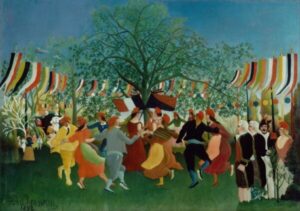10 Legendary Weapons From Celtic Mythology That Were Insanely Overpowered
When people talk about Celtic mythology, they often picture misty hills, ancient stones, and strange, whispered legends. But what’s truly fascinating is just how wild and unbelievable some of these stories are — especially when it comes to the weapons. These aren’t your ordinary swords and shields; we’re talking about mystical artifacts that feel like they belong in a fantasy video game, not in the folklore of Ireland, Scotland, and Wales.
Most of these tales don’t come from England itself, but from the Celtic roots found in Britain’s older corners. They’re the legends of the druids, the mysterious priests said to hold secrets of nature and magic, and the stories of the Otherworld — a place that’s not quite heaven, not quite earth, but something in between. It’s also where some of the early pieces of Arthurian legend got their start, long before knights in shining armor became a thing.
But what really makes these myths pop are the weapons. They’re not just tools of war — they’re symbols, sometimes alive, often enchanted, and always extreme. Imagine a spear that screams when thrown, or a sword that never misses its target. Some of these weapons are so ridiculously powerful that if they showed up in a movie, you’d probably roll your eyes. But in Celtic lore, they make perfect sense.
Take the Spear of Lugh, for example. It was said to be so bloodthirsty, it had to be kept submerged in a sleeping potion when not in battle. Or the Cauldron of Dagda, which could feed entire armies and never run empty — not exactly a weapon, but definitely a supernatural tool of serious impact.
These stories weren’t just entertainment. They reflected how people saw the world: full of danger, mystery, and moments of awe. And even now, these legendary items continue to inspire everything from modern fantasy novels to blockbuster games.
If you’re into ancient myths with a twist of the unbelievable, Celtic weaponry is a treasure trove of weirdness and wonder. It’s not just history — it’s a wild ride into the imagination of a culture that saw magic hiding in every stone, forest, and battlefield.
10. Lorg Mór – The Giant Staff of Life and Death
If there’s one item in Celtic mythology that screams “overpowered,” it’s the Lorg Mór — also known as Lorg Anfaid, or the “Staff of Wrath.” Picture this: a colossal, forked staff so massive it needed eight men and a wheel just to move it, tearing grooves through the earth wherever it passed. This wasn’t just a walking stick; it was a weapon of legend.
The staff belonged to the Dagda, the god often referred to as the “Good God” — not because he was morally pure, but because he was good at everything. He was a protector, a warrior, and a magician all rolled into one. With one end of the Lorg Mór, he could strike down nine enemies in a single blow. With the other end? He could bring the dead back to life. Now that’s balance.
To grasp just how massive the Dagda was, check this out: during the Second Battle of Mag Tuired, he supposedly ate a cauldron-sized portion of porridge from a hole in the ground, using a spoon so big that “a man and woman could lie in it together.” Yes, you read that right — his spoon was basically a hot tub.
And that wasn’t the only legendary item he wielded. The Cauldron of Dagda, one of the Four Treasures of the Tuatha Dé Danann, could magically serve endless food, enough to sustain entire armies (source). Then there was his harp, a musical instrument so enchanted that it could swing the tide of war — boosting courage or plunging armies into despair. When stolen by the malevolent Fomorians, the harp didn’t wait around. At the mere sound of the Dagda’s voice, it ripped itself off the wall and slaughtered the thieves in the room.
The Lorg Mór isn’t just an ancient curiosity — it’s a vivid example of how Celtic legends combined physical might with mystical power, wrapped in rich storytelling. And let’s be honest, who wouldn’t want a staff that kills with one end and revives with the other?
9. Dyrnwyn – The Flaming Sword of the Worthy
Before Britain became the land of knights and castles, ancient Welsh legend tells of a mystical place called Clas Myrddin — “Myrddin’s Enclosure.” It was said to exist when gods still walked among mortals, and it was here that Myrddin, a powerful figure from pre-Christian myth, was trapped inside a house made of air and enchantment. This spell, so strong it would last “as long as the world endureth,” was no ordinary magic.
Myrddin may sound familiar — that’s because he was later turned into Merlin, the wise wizard of Arthurian tales, thanks to centuries of Christian reinterpretation. But long before that, Myrddin was considered so powerful that even the Greeks supposedly linked him to Kronos, the Titan father of Zeus. Quite the resume.
Among the legendary Thirteen Treasures of Britain that Myrddin took with him was a sword that could easily belong in a modern fantasy epic: Dyrnwyn, meaning “White-Hilt.” But this wasn’t just a ceremonial blade. Dyrnwyn had a terrifying enchantment — when drawn by a worthy warrior, it would erupt into flames from hilt to tip, a fiery beacon of power not unlike a lightsaber. (Related: What Are the Thirteen Treasures of Britain?)
But there was a catch. If the person drawing the sword was unworthy, they wouldn’t be lighting the sword — they would ignite instead. Yep, instant incineration. That might explain why so few dared to test it, even though its owner, King Rhydderch Hael of Strathclyde, was famously generous and offered it freely. His generosity even earned him the nickname “the Generous,” but you can imagine why his offers were usually met with polite declines.
What makes Dyrnwyn so fascinating isn’t just the fire and fury — it’s the moral behind it. Worthiness wasn’t measured by strength alone, but by character. In a world of enchanted swords and divine warriors, your soul had better be as pure as your blade.
8. Moralltach – The Sword of Fate
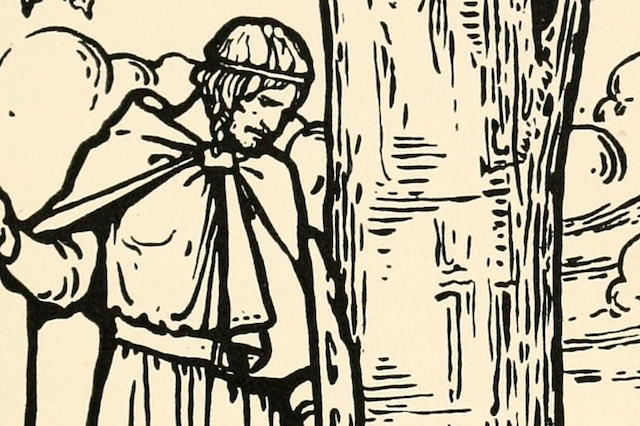
In the rich tapestry of Irish mythology, few weapons are as legendary as Moralltach, aptly named “Great Fury.” This formidable sword was wielded by Diarmuid Ua Duibhne (pronounced Dermot O’Dyna), the foster son of Aengus, the god of love and fertility. Moralltach, a gift from his mentor Manannán mac Lir, the sea god, was no ordinary blade. It was said to never leave a strike unfinished, ensuring that every blow was a lethal one. Because of its unmatched lethality, it was reserved solely for the most perilous battles. For less intense encounters, Diarmuid relied on its counterpart, Beagalltach, or “Little Fury,” a gentler but still formidable sword.
One fateful night, Diarmuid and his beloved Gráinne were roused from their slumber by the persistent barking of a dog. Gráinne, with a woman’s intuition, urged Diarmuid to take Moralltach with him to investigate. He dismissed her concerns, thinking, “How can danger arise from such a small affair?” Armed only with Beagalltach, he ventured out.
What he encountered was far from ordinary. A boar hunt was underway, but this was no typical boar. Years ago, Aengus had cruelly killed a wizard’s son out of jealousy, and in retaliation, the wizard had transformed his son’s corpse into a monstrous boar. The beast was destined to bring about Diarmuid’s demise. As Diarmuid faced the boar, he realized too late the gravity of his mistake. “Woe to him who does not follow the advice of a good wife!” he exclaimed in despair.
Despite his skill, Beagalltach proved inadequate against the boar’s thick hide. Each strike simply glanced off, leaving him vulnerable. Tragically, Diarmuid met his end that night, a victim of his own underestimation.
Imagine, though, if Diarmuid had brought Moralltach to that fateful encounter. Legend has it that with a single swing, he could split the boar in half. This sword was no mere weapon; it was a force of nature. In one historic battle, Diarmuid wielded Moralltach with such ferocity that he tore through the enemy ranks, “like a wolf among sheep, or a hawk among sparrows,” leaving a trail of destruction in his wake. Only a few survived his wrath.
This tale serves as a poignant reminder of the importance of heeding wisdom, even when it comes from unexpected sources. And it showcases the legendary power of weapons that are more than just tools—they are symbols of fate and destiny.
7. Claíomh Solais – The Blinding Blade of No Escape
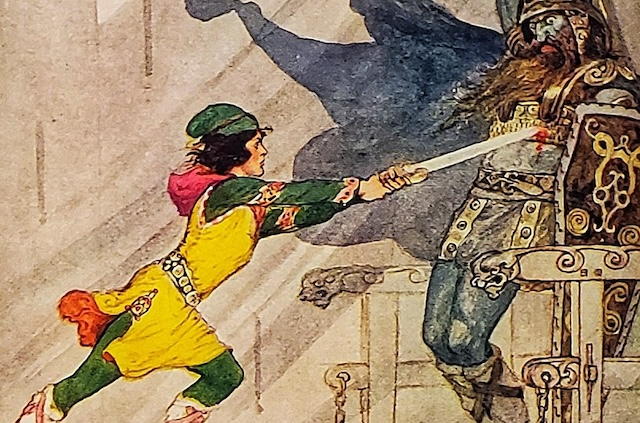
Imagine a weapon so powerful that the moment it’s unsheathed, your fate is sealed. That’s the myth behind Claíomh Solais, often called the “Sword of Light.” Forged for Nuada, king of the Irish gods — the Tuatha Dé Danann — this wasn’t your average magical sword. It was one of the Four Legendary Treasures of the Tuatha Dé Danann, alongside the Lia Fáil (or Stone of Destiny), Lugh’s Spear, and the Dagda’s Cauldron, each one said to hold immense, world-altering power. (Who Were the Tuatha Dé Danann?)
But among these artifacts, Claíomh Solais stood out for one terrifying reason: once drawn, no enemy could escape, and no blow could be dodged. Resistance was useless. Death was almost immediate. Even more spine-chilling? The wielder couldn’t be killed while holding it. If anyone else dared to try using it, the sword would emit a deafening, almost supernatural shriek — imagine a magical car alarm made to humiliate the unworthy.
This sword wasn’t just confined to Irish shores either. Its legend spread across Scotland and appears in various Celtic folk tales, reinforcing its place as a pan-Gaelic symbol of power and purity. Some scholars even believe that Claíomh Solais served as an early inspiration for King Arthur’s Excalibur — another weapon that chose its wielder and cut through legend as easily as steel.
6. Gáe Bulg – The Spear That Guaranteed Death
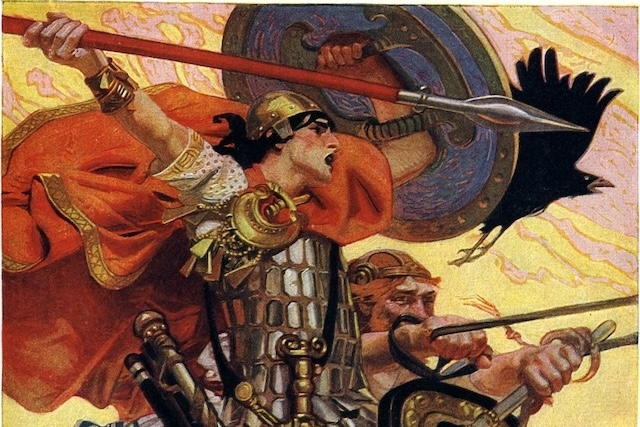
Some weapons were crafted by blacksmiths. Others… by legend itself. The Gáe Bulg, meaning “barbed spear” in ancient Irish, wasn’t forged in a fire—it was carved from the bones of a terrifying sea monster, making it more of a cursed relic than just a killing tool. (Explore more about Cú Chulainn here)
This monstrous weapon belonged to the legendary hero Cú Chulainn, one of Ireland’s most feared warriors. But it wasn’t just handed to him. He earned it from Scáthach, the fierce warrior goddess who trained him—only after proving himself more skilled than all her other students. And this wasn’t a weapon you casually carried into battle. You couldn’t throw it by hand. Nope. To unleash its full horror, you had to kick it from your foot, launching it like a deadly missile from your toes. Just imagine mastering that.
Once it struck, the Gáe Bulg didn’t simply pierce—it exploded with barbs inside the body. The number varies depending on the tale—some say 30, others 49, but either way, the effect was always the same: complete internal devastation. You couldn’t pull it out. It had to be carved out of the body, piece by piece, with a knife. Brutal, slow, and agonizing—for both the victim and the one retrieving it.
Because of this, Cú Chulainn avoided using it, considering it a weapon of last resort. It was too final, too dishonorable for regular warfare. But when he was truly cornered—facing foes as powerful as he was—he would unleash it with deadly precision.
He used it only three times, and each incident reads like a dark tragedy:
- On his own son Connla, unknowingly, tearing him apart from the inside.
- Against Loch, the champion of Queen Medb, whose heart was split in two.
- And most heartbreakingly, on Ferdiad, his closest friend and fellow student, whose body was “filled in every limb and crevice with wounds.”
These weren’t just kills. They were deeply personal, world-shaking events in Irish legend.
In a world where weapons usually say something about their owner, Gáe Bulg screams of desperation, sacrifice, and mythic sorrow. A tool for killing legends, but only when no other option remained.
5. Lúin of Celtchar — The Spear That Hungered for Blood

Not all weapons obey their wielders. Some have their own will—and the Lúin of Celtchar was one of the most uncontrollable and terrifying of all. Picture a spear so bloodthirsty it shook in rage when no enemy was nearby, desperate to pierce flesh. If it couldn’t get a taste of blood, it wouldn’t sulk—it would attack its owner instead. (More on the mythic battles of Ireland)
The only way to calm this violent spirit? Dunk it into a cauldron filled with venom. Yes, venom. Not oil, not water—pure poison, just to cool it down. That’s how dangerous the Lúin was. It wasn’t just a spear. It was a wild beast in disguise.
And its powers didn’t stop there. It could strike enemies from afar without even making contact. The hero Celtchar, its unfortunate owner, could simply thrust it into the ground, and somewhere in the distance, someone would fall dead.
But when thrown—if you dared to throw it—it killed nine men at once. Nine. And not random soldiers either. The Lúin somehow targeted the powerful—a king, a royal heir, or a greedy chieftain would always be among the fallen.
Celtchar once used it to kill a god who slept with his wife, a move that feels both justifiable and doomed. And indeed, he later died by the very same weapon. That’s the kind of tale Lúin leaves behind—not just of victory, but of blood-soaked tragedy.
Eventually, the spear was found abandoned on the battlefield of Mag Tuired, like a cursed relic waiting for its next master—or victim. No one dared pick it up again.
The Lúin of Celtchar wasn’t just a tool of war—it was a living curse, a story about power that cannot be controlled, and the price of wielding something too strong for any mortal to handle.
4. Lugh’s Spear – The Weapon of a God
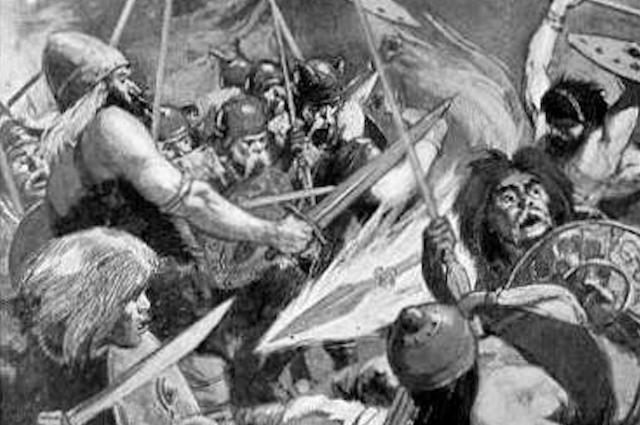
Lugh’s spear, also known as Gae Assail, is one of the most legendary weapons in Irish mythology. It’s one of the Four Treasures of the Tuatha Dé Danann, their most prized magical creations. But here’s where it gets interesting—some say Lugh actually stole this spear from the King of Persia, on purpose. Whether it was a gift or a heist, this spear made Lugh unbeatable in battle. As the old Irish saga Cath Maige Tuired (The Battle of Mag Tuired) tells us, “No battle was ever won against it or him who held it in his hand.” That’s some serious power!
Lugh himself was one of the most important gods in Celtic mythology. His influence is still felt today in places like Lyon, France, which was once called Lugdunum, meaning “fortress of Lugh.” He was a sun god, often compared to Apollo, and his story is full of drama. Lugh was the grandson of Balor, a tyrannical king who was basically the Celtic version of Sauron. Balor wanted to kill Lugh when he was just a baby because a prophecy said Lugh would one day destroy him. Sound familiar? It’s a lot like the story of Kronos/Saturn devouring his children in Greek mythology. But just like Zeus, Lugh escaped and was raised by the sea god Manannán. He grew up to become the god of arts, crafts, and skill—basically the ultimate Renaissance god before the Renaissance even existed.
And then, of course, there’s the prophecy. Just like Zeus taking down Kronos, Lugh fulfilled his destiny by killing Balor. But he didn’t do it with a sword or a bow—he used his magical spear. This wasn’t just any spear; it was enchanted. It always returned to its thrower, like Thor’s hammer, and it never missed its target. With this weapon, Lugh was untouchable.
But here’s the twist: Lugh, the mighty warrior, sun god, and “Master of All Arts,” has had a bit of a downgrade over the years. Today, he’s not the powerful deity he once was. Instead, he’s become the Irish equivalent of a leprechaun—a diminutive fairy craftsman known as Lugh-chromain, or “little stooping Lugh.” It’s a far cry from his former glory, but his legacy lives on in myths, place names, and even the pride of the Irish people.
3. Fragarach – The Sword That Demanded the Truth
Among the most mysterious and overpowering blades in Celtic lore is Fragarach, which means “The Answerer”. It wasn’t just a weapon—it was a judge, a stormcaller, and in many ways, a living force. Originally crafted by the gods and given to Nuada, the High King of Ireland, Fragarach had a single purpose: to be used beside the Lia Fáil (Stone of Destiny)—a sacred rock that would roar to recognize the true king. As the stone roared, Fragarach would whisper back, sealing the ruler’s divine legitimacy.
But Fragarach didn’t stop there. This sword came with a portfolio of terrifying powers. It could force the truth from anyone, stripping away deception like peeling skin from an onion. It could also drain a person’s strength without even making contact. No shield or armor—not even solid walls—could stop its edge. And when called upon, it flew into the wielder’s hand like a loyal hawk returning to the glove.
And yes—it could control the weather. Why? Who knows. Celtic myths don’t always explain these things. It simply could.
Perhaps most chilling of all, a single nick from Fragarach was a death sentence. Not instantly dramatic—no decapitations needed—but swift and final. You’d be dead in seconds.
Eventually, the sword passed to Lugh, the young, brilliant god of light and war. He wasn’t a king, but he earned Fragarach when Nuada lost an arm battling the Fomorians, a race of chaotic giants. And when Lugh took up the blade, things changed.
He sailed into battle aboard a self-steering ship, a gift from the sea god Manannán mac Lir (learn more), with Fragarach in hand. Witnesses said his arrival felt like watching the sun rise after a long, cruel night.
Lugh struck like fate itself. With Fragarach gleaming, he slaughtered almost all the Fomorian invaders, leaving just nine alive to deliver a message to their monstrous leader, Balor:
“There will be no more tributes. Ever.”
Fragarach wasn’t just a sword. It was a myth given steel, a relic of truth and destruction that could change the course of history—or end it.
2. Caladbolg – The Rainbow-Sword That Shaped the Land
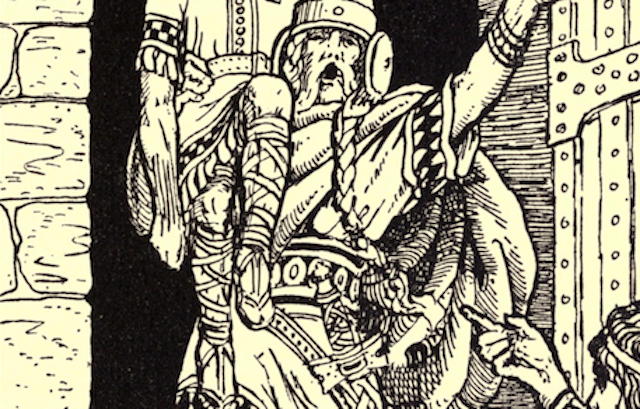
Long before Arthur drew Excalibur from the stone, there was Caladbolg—a blade of legend so powerful it didn’t just cut down men; it reshaped mountains.
The sword passed through several hands, but none quite like Fergus mac Róich, the towering king of Ulster and possibly the most excessive hero in Irish myth. Not only was he a famed warrior, but he was also said to possess enormous sexual appetite—requiring seven women to satisfy him—and played important roles as Cú Chulainn’s mentor and Queen Medb’s lover.
But what truly set Fergus apart was his wielding of Caladbolg—a massive two-handed sword with an arc so wide and brilliant that it was said to shine like a rainbow when swung. In battle, it could slice through entire ranks of soldiers in a single sweep. More than that, it was said to be so destructive, it could level the very earth.
At the infamous Battle of Garach, Fergus—driven mad by rage against his stepson Conchobar, who had stolen his throne—unleashed Caladbolg with apocalyptic fury. In his bloodlust, he cut down hundreds of his own men just to get to his rival. But just as he was about to land the killing blow, Conchobar’s son Cormac stepped in, pleading for his father’s life.
Somewhat calmed, Fergus turned instead to another man—Conall, twin of Cú Chulainn—who managed to physically restrain him. Still, Fergus’s battle-frenzy had to go somewhere, so in a fit of divine tantrum, he turned Caladbolg on the land itself. With a mighty swing, he sliced the tops off three mountains, which became known as the Maela or “Flat-Tops” of Meath.
The name Caladbolg means “hard lightning” or “crushing thunderbolt“, and many scholars believe it to be the precursor of Excalibur. In fact, its Welsh name, Caledfwlch, was Latinized to Caliburnus, and eventually transformed into the legendary Excalibur of Arthurian fame.
1. Balor’s Eye: The Weapon of Destruction
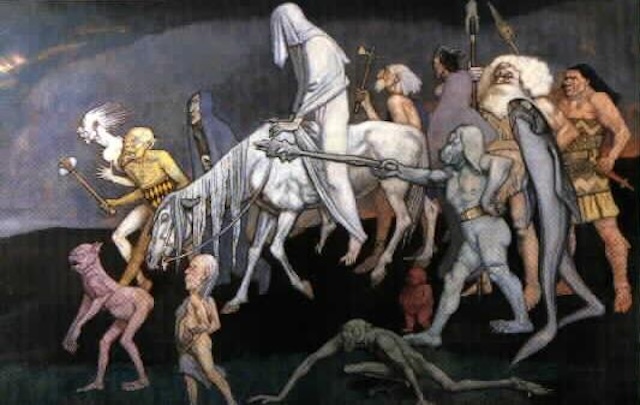
Balor, the fearsome king of the Fomorians, was a figure of terror in Irish mythology. His most terrifying weapon wasn’t a sword or a spear—it was his eye. This wasn’t just any eye; it was like a siege engine, capable of unimaginable devastation. The eye was so massive and powerful that it took four men to lift the lid whenever it was opened. And when it was unleashed, the destruction was catastrophic. Entire armies could be reduced to ashes, and whole regions could be laid waste. Some say this is why the islands west of Scotland are so bleak and haunted to this day—they bear the scars of Balor’s deadly gaze.
The eye’s power was so immense that it wasn’t just dangerous when in use; it was dangerous even when being prepared. To keep it contained, the eye was usually covered by seven cloaks. Each cloak, when removed, unleashed a progressively destructive effect:
- The first cloak withered ferns.
- The second browned the grass.
- The third heated the trees.
- The fourth set them smoldering.
- The fifth made them burn hot.
- The final two cloaks ignited the landscape into flames.
It’s no wonder Balor was so feared. But as the old saying goes, “Pride comes before a fall.” Balor’s downfall came through the very weapon that made him invincible—his eye.
The story goes that Balor met his end in a fateful battle against Lugh, the Celtic god of light and craftsmanship. As the two faced off on the battlefield, Lugh began to speak. Balor, annoyed by the “babbler,” turned to one of his men and ordered, “Lift up mine eyelid, my lad, that I may see the babbler who is conversing with me.” As soon as the eyelid was raised, Lugh seized the opportunity. With incredible aim, he hurled a stone from his sling, striking Balor’s eye with perfect precision. The stone shot through the eye, piercing Balor’s skull, and exited out the back of his head—but only his own men could see it. The sight of their king’s destruction was so overwhelming that they dropped dead on the spot, leaving Balor completely alone. In this ironic twist, it was Balor’s own deadly eye that led to his demise.
Balor’s Eye is a perfect example of how even the most fearsome weapons can become a source of vulnerability. It’s a tale of hubris, strategy, and the kind of poetic justice that makes mythology so enduring. Today, the story of Balor’s Eye remains one of the most dramatic and fascinating legends in Irish folklore.








